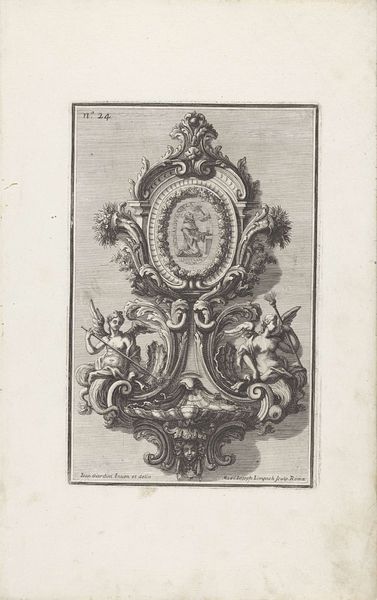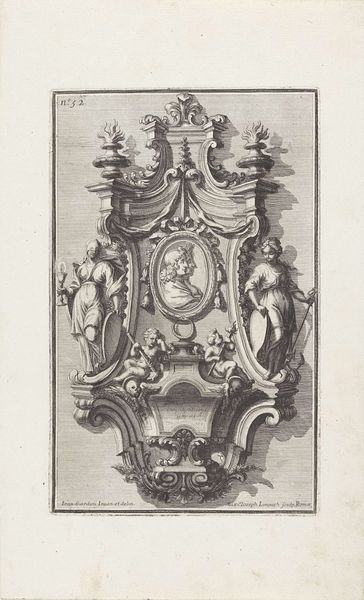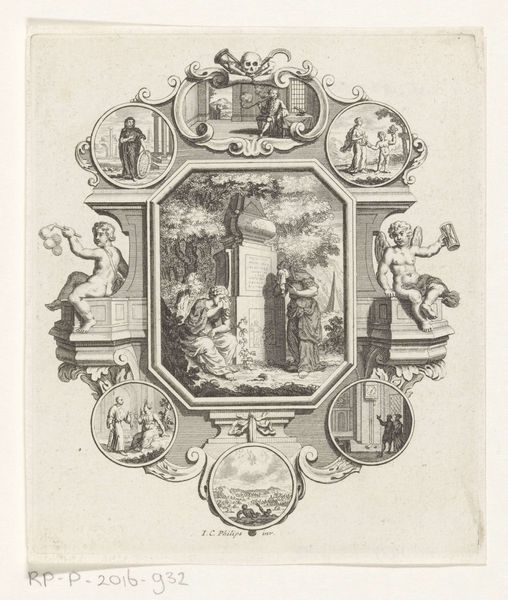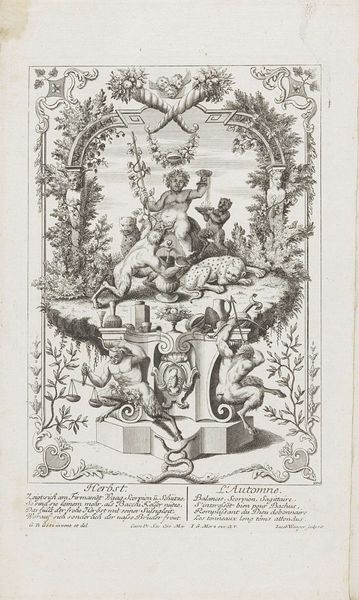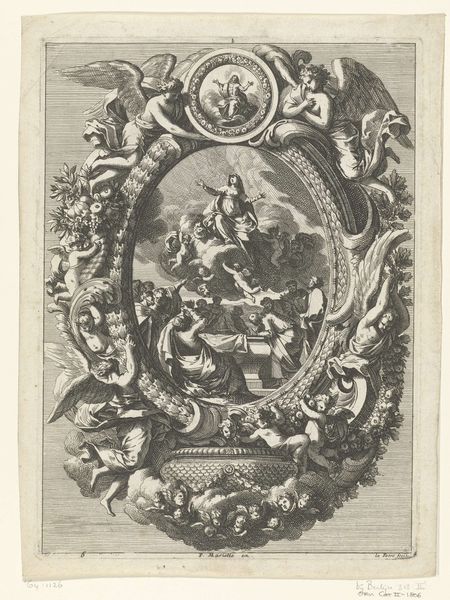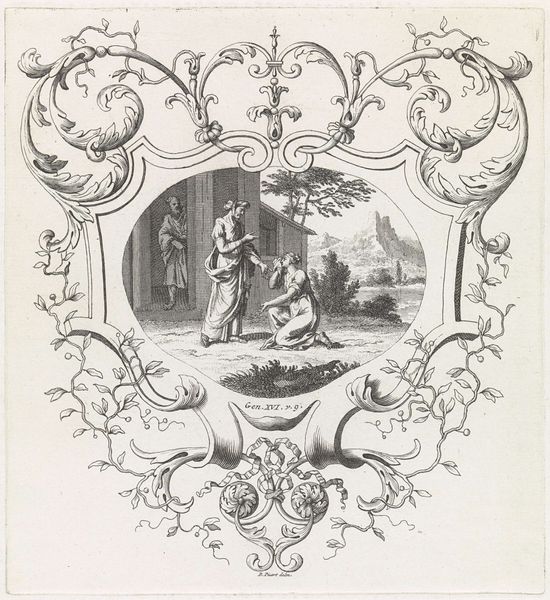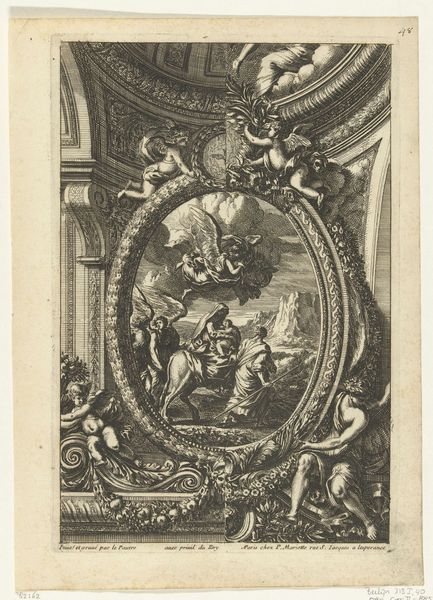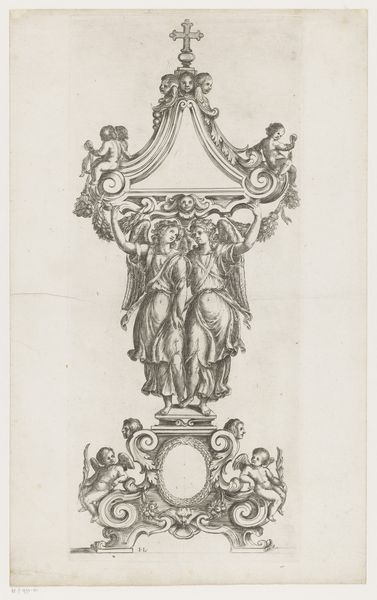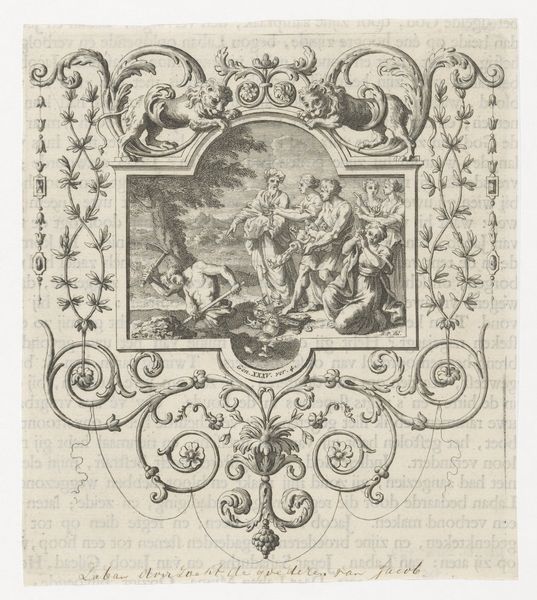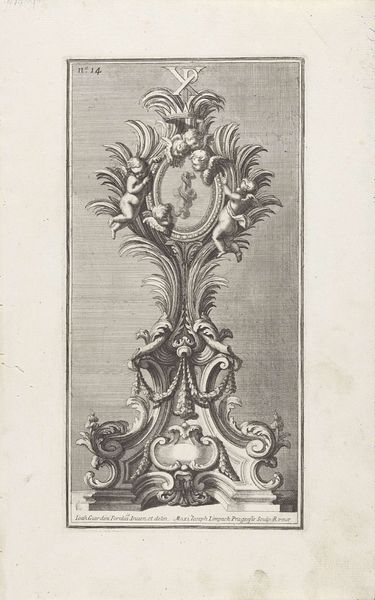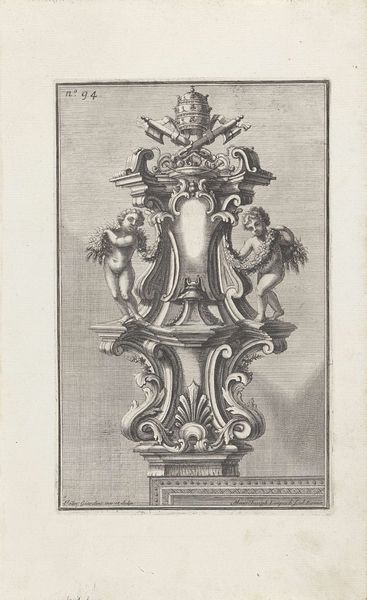
Ornament met Johannes de Doper in de wildernis en twee engelen 1714
0:00
0:00
maximilianjosephlimpach
Rijksmuseum
ornament, print, engraving
#
ornament
#
baroque
# print
#
history-painting
#
engraving
Dimensions: height 239 mm, width 155 mm
Copyright: Rijks Museum: Open Domain
Editor: So, we're looking at "Ornament met Johannes de Doper in de wildernis en twee engelen," an engraving by Maximilian Joseph Limpach from 1714. It’s incredibly detailed, but also quite formal. The scene with John the Baptist seems almost secondary to the elaborate ornamental frame. How do you read the relationship between the central image and the ornamental setting in this work? Curator: The extravagance of the baroque frame in relation to John the Baptist's humble scene is, in fact, highly telling. Remember that baroque art often served the purpose of projecting power, specifically the power of the Church or aristocracy. How might that influence how an audience views John, a figure often associated with poverty and piety? Editor: I suppose it kind of "ennobles" him. Is it almost a way to validate or legitimise the Baptist through sheer visual grandeur? Curator: Exactly. Engravings like this also functioned as models for other artworks and decorative objects. The dissemination of religious and historical themes via prints contributed to a shared visual culture and served as a mechanism for solidifying narratives. In a way, the ornament *is* the message, reinforcing the value placed on such display in the period. Why do you think that the work includes two artists' signatures? Editor: That's fascinating. I see the first artist is responsible for the initial "design," while Maximilian Joseph Limpach is the engraver reproducing the design? That would mean they had two completely separate roles in this print’s production, reflecting a division of labour within the art world, right? Curator: Precisely. We gain an appreciation for art’s multifaceted context, seeing it as a convergence of workshop production and social influence. How interesting to observe that something meant to convey religious ideals gets wrapped in economic, productive and institutional structures. Editor: It's much more complex than I initially perceived; it's fascinating to consider the social mechanisms that shaped this image and its distribution.
Comments
No comments
Be the first to comment and join the conversation on the ultimate creative platform.
